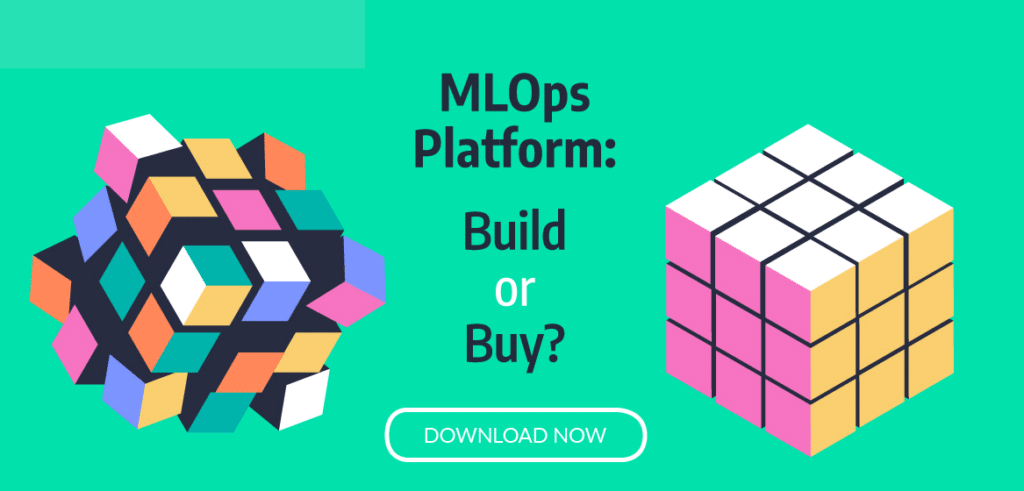Implementing Automation and an MLOps Framework for Enterprise-scale ML
Alexandra Quinn | September 19, 2021
With the explosion of the machine learning tooling space, the barrier to entry has never been lower for companies looking to invest in AI initiatives. But enterprise AI in production is still immature. How are companies getting to production and scaling up with machine learning in 2021?
Implementing data science at scale used to be an endeavor reserved for the tech giants with their armies of developers and deep pockets. Today, building a machine learning application is feasible for even the leanest startup.
Yet even with the massive growth of the ML tooling space, enterprise AI in production is still immature, lacking a convergence on a common set of best practices and tools. As a response to market conditions caused by the COVID-19 pandemic and its acceleration of all things digital, many companies are forecasting even more investment in AI initiatives in the coming year. To get beyond the experimentation phase, organizations need an automated and streamlined approach to ML operationalization (MLOps). This approach is not just about machine learning workflow automation to accelerate the deployment of ML models to production. It’s also important at an enterprise level, to manage risk as ML gets scaled across the organization to more use cases in dynamic environments, and ensures that the applications continually fulfill business goals.
The role of MLOps to the broader organization shouldn’t be underestimated. Whereas building software is by now a mature and straightforward practice with decades of best practices and a large pool of veteran practitioners, building data-intensive ML applications is...well, the opposite. Managing complex data, designing and building repeatable workflows and collaborative processes, all while contributing to the company’s bottom line can quickly spiral a project into acute technical debt. For these reasons and more, companies across industries are starting to realize the value of a standardized and coordinated MLOps practice.
The question for technology leaders is, how to build this practice? The role of MLOps is to create a coordinated process that can efficiently support and scale a CI/CD workflow for ML in production. ML teams, composed of several different skill sets and roles, will need a vast array of tools, specialized for specific use cases and job functions. Enterprises will need to analyze their needs for each component in the ML tool stack (as they’ll be highly use case dependent), evaluate what solutions exist on the market, and how they’ll eventually fit together with the other necessary components.
An automated ML platform and set of development processes is one of the differentiating factors of high-performing ML teams. Enterprises that are serious about seeing a return on their AI initiatives are faced with the choice of whether to build their own in-house MLOps framework, or buy a MLOps platform off the shelf. In our new whitepaper, we’ll take you through the questions to ask and considerations to weigh to help your team make an informed choice.
Considerations for Buying or Building Your MLOps Platform
There is no one-size-fits-all approach to building an MLOps framework. Your team will need to consider:
- Technical requirements specific to the use case(s). Will your AI application need to serve inferences with ultra low latency? Does the application include large-scale data sets that will need distributed processing?
- Functional needs from your existing ML team: For example, do your data scientists need a way to write code in Python and deploy without DevOps? MLOps for Python will help your team move faster.
- Deployment requirements: How will your application be deployed--on one cloud, multi-cloud, hybrid, on-prem? Where will your data come from, and where will it go? How your team addresses data pipeline automation will make a big impact on timelines and model accuracy.
- Thinking ahead: Consider what use cases and business requirements will exist 5 years down the road. Make sure the decisions you make now around infrastructure and technology will scale along with you.
So, should you build an MLOps framework, or buy and integrate an MLOps platform off the shelf? We say, it depends. Given the time and resources that must be allocated, companies on their data science journey will want to carefully collect the input of stakeholders and their requirements. With the right strategy, ML teams large and small can help make a game-changing impact on their industries.
Want to discover a framework for deciding whether to build or buy an MLOps platform? Download our whitepaper on this topic.



